A student performs an experiment on photoelectric effect, using two materials A and B. A plot of Vs⊤ vs ν is given in fig.
(i) Which material A or B has a higher work function?
(ii) Given the electric charge of an electron =1.6×10−19C, find the value of h obtained from the experiment for both A and B. Comment on whether it is consistent with Einstein's theory.
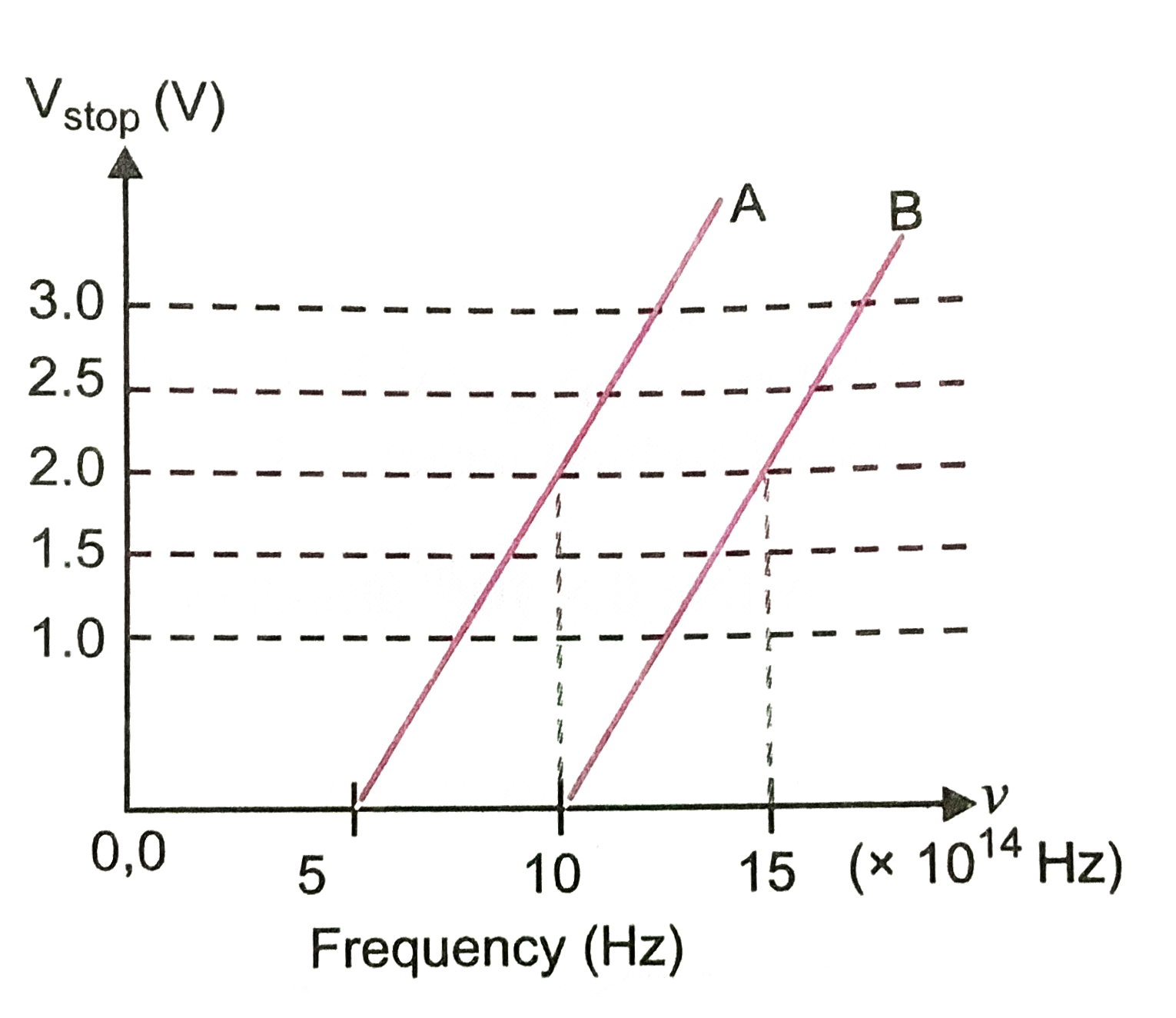
(i) Given, thresholed frequency of A is given by vOA=5×1014 Hz and
For B, vOB=10×1014Hz
We know that
Work function, ϕ=hv0orϕ0∝v0
⇒ ϕ0∝v0
So, ϕOAϕOB=5×101410×1014<1
⇒ ϕOA<ϕOB
Thus, work function of B is higher than A.
(ii) For metal A, slope =he=2(10−5)1014
or h=2e5×1014=2×1.6××10−195×1014
=6.4×10−34Js
For metal B, slope =he=2.5(15−10)1014
or h=2.5×e5×1014=2.5×1.6×10−195×1014
=8×10−34Js
Since, the value of h from experiment for metals A and B is different. Hence, experiment is not consistent with theory.
Topper's Solved these Questions
- DUAL NATURE OF RADIATION AND MATTERBook:NCERT EXEMPLAR ENGLISHChapter:DUAL NATURE OF RADIATION AND MATTERExercise:SHORT ANSWER TYPE QUESTIONS
Explore 6 Videos
- CURRENT ELECTRICITYBook:NCERT EXEMPLAR ENGLISHChapter:CURRENT ELECTRICITYExercise:Very Short Answer Type Question.
Explore 20 Videos
- ELECTRIC CHARGES AND FIELDBook:NCERT EXEMPLAR ENGLISHChapter:ELECTRIC CHARGES AND FIELDExercise:Long Answer Type Question
Explore 6 Videos
Similar Questions
In an experiment on photoelectric effect, the slope of the cut off voltage versus frequency of incident light is found to be 4.12×10−15Vs. Given e=1.6×10−19C, estimate the value of Planck's constant.
View SolutionSketch the graphs, showing the variation of stopping potential Vs with frequency v of the incident radiations for two photosensitive materials A and B having threshold frequencies v0>v'0 respectively.
(i) which of the two metals A or B has higher work function?
(ii) What information do you get from the slope of the graphs?
(iii) What does the value of the intercept of graph A on the potential axis represent?
View Solution
Knowledge Check
A student performs an experiment on photoelectric effect using two materials A and B. A plot of stopping potential (V0) vs freqency (v) is as shown in the figure.
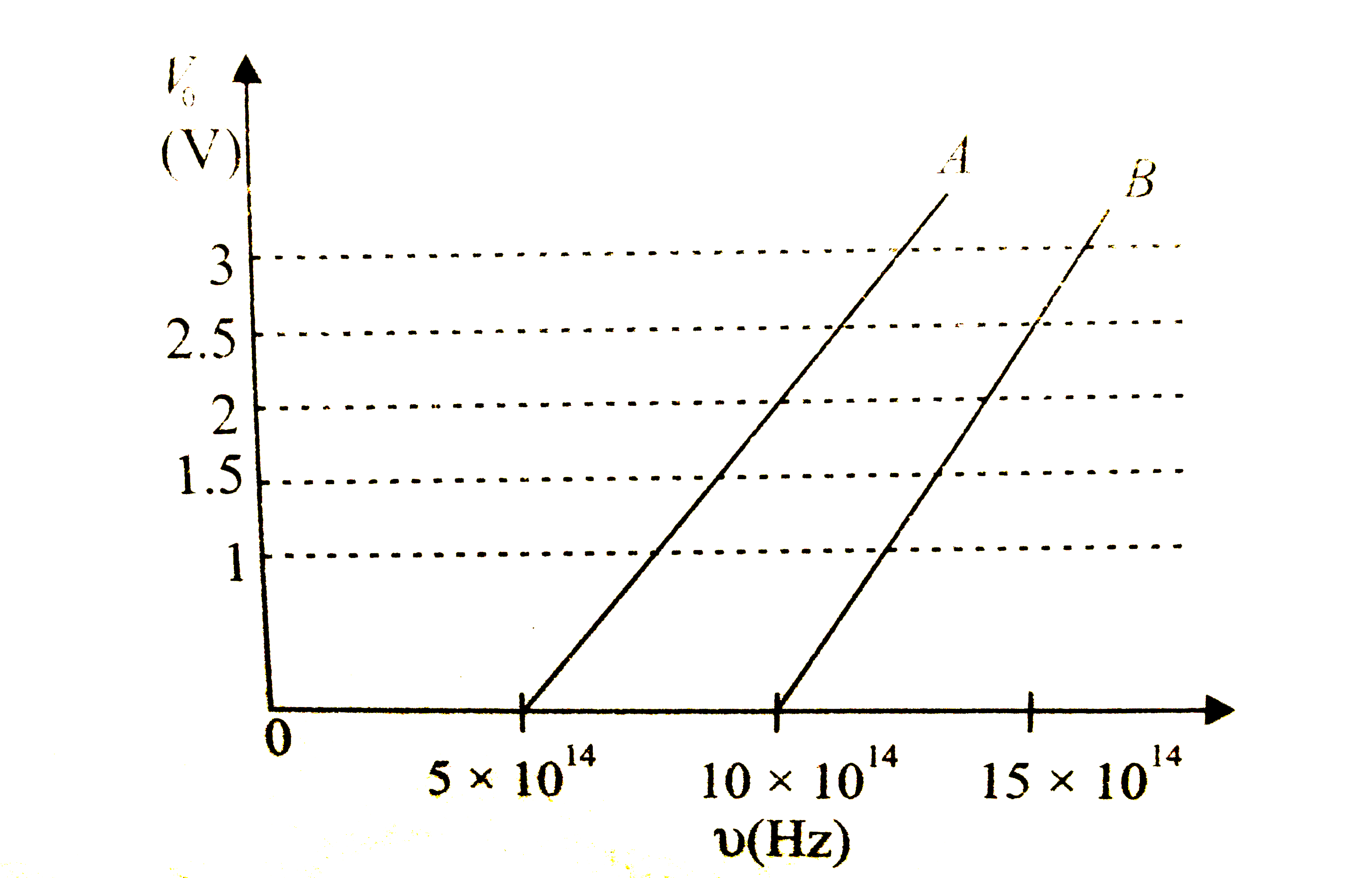
The value of h obtained from the experiment for both A and B respectively is
(Given electric charge of an electron =1.6×10−19C)A3.2×10−34Js,4×10−34JsB6.4×10−34Js,8×10−34JsC1.2×10−34Js,3.2×10−34JsD4.2×10−34Js,5×10−34Js
In an experiment on photoelectric emission from a metallic surface ,wavelength of incident light 2×10−7 m and stopping potential is 2.5V .The threshold frequency of the metal (in Hz) approximately
(Charge of electrons e=1.6×10−19C, Planck's constant ,h=6.6×10−34J−s)
View SolutionIn moving from A to B along an electric field line, the work done by the electric field on an electron is 6.4×10−19J. If ϕ1andϕ2 are equipotential surfaces, then the potential difference VC−VA is.
 .
.
View SolutionIn the study of a photoelectric effect the graph between the stopping potential V and frequency ν of the incident radiation on two different metals P and Q is shown in fig.
(i) which one of two metals have higher threshold frequency
(ii) Determine the work function of the metal which has greater value
(iii) Find the maximum kinetic energy of electron emitted by light of frequency 8×1014Hz for this metal.
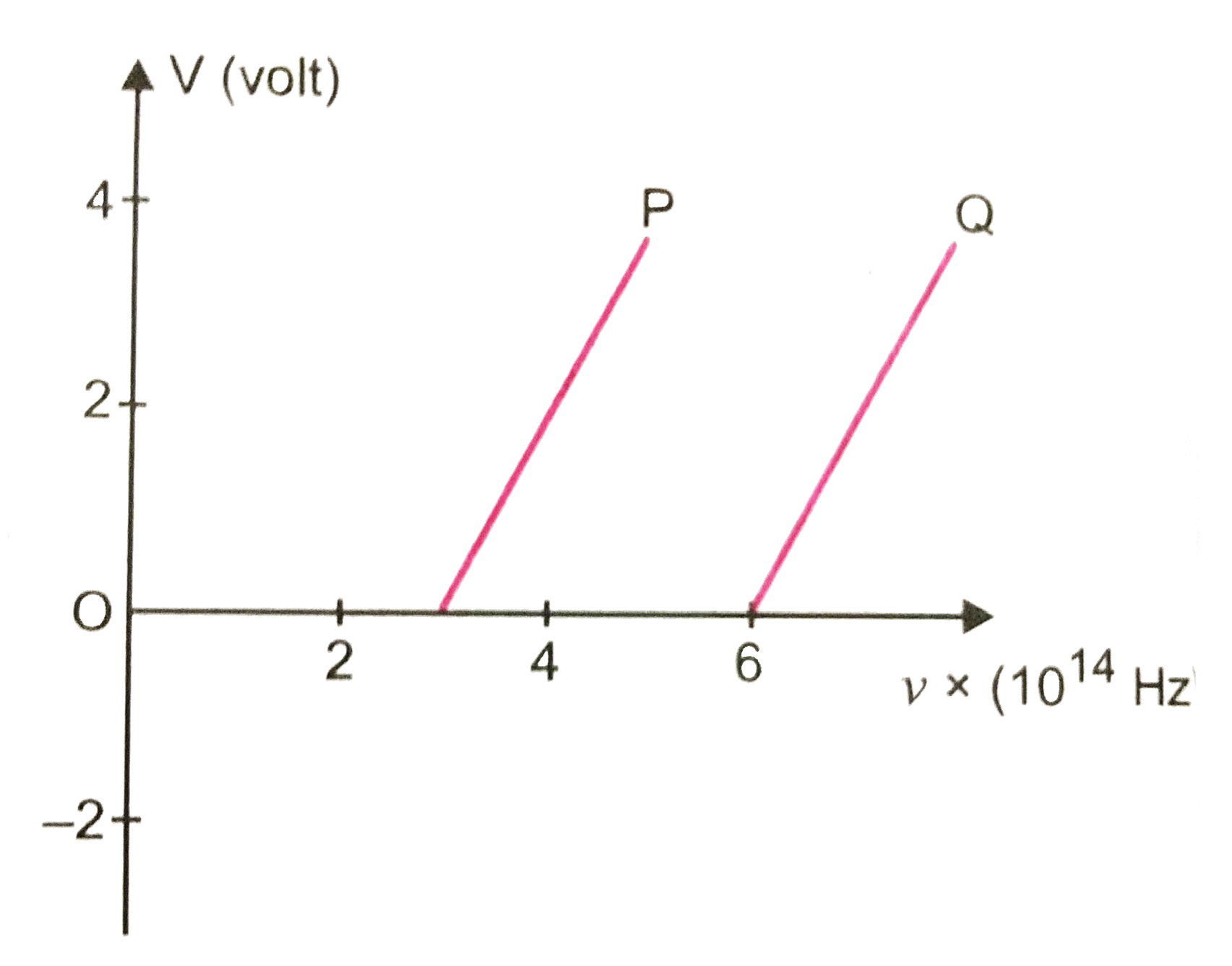
View SolutionIn an experiment on photo electric emission, following observations were made,
(i) Wavelength of the incident light =1.98×10−7m,
(ii) Stopping potential =2.5volt.
Find: (a) Kinetic energy of photoelectrons with maximum speed.
(b) Work function and
(c )Threshold frequency,
View SolutionIn an experiment on photoelectric effect, the emitter and the collector plates are placed at a separation of 10cm and are connected through an ammeter without any cell. A magnetic field B exists parallel to the plates. The work function of the emitter is 2.39 e V and the light incident on it has wavelengths between 400nm and 600nm. Find the minimum value of B for which the current registered by the ammeter is zero. Neglect any effect of space charge.

View SolutionConsider a box with three terminals on top of it as shown in figure.
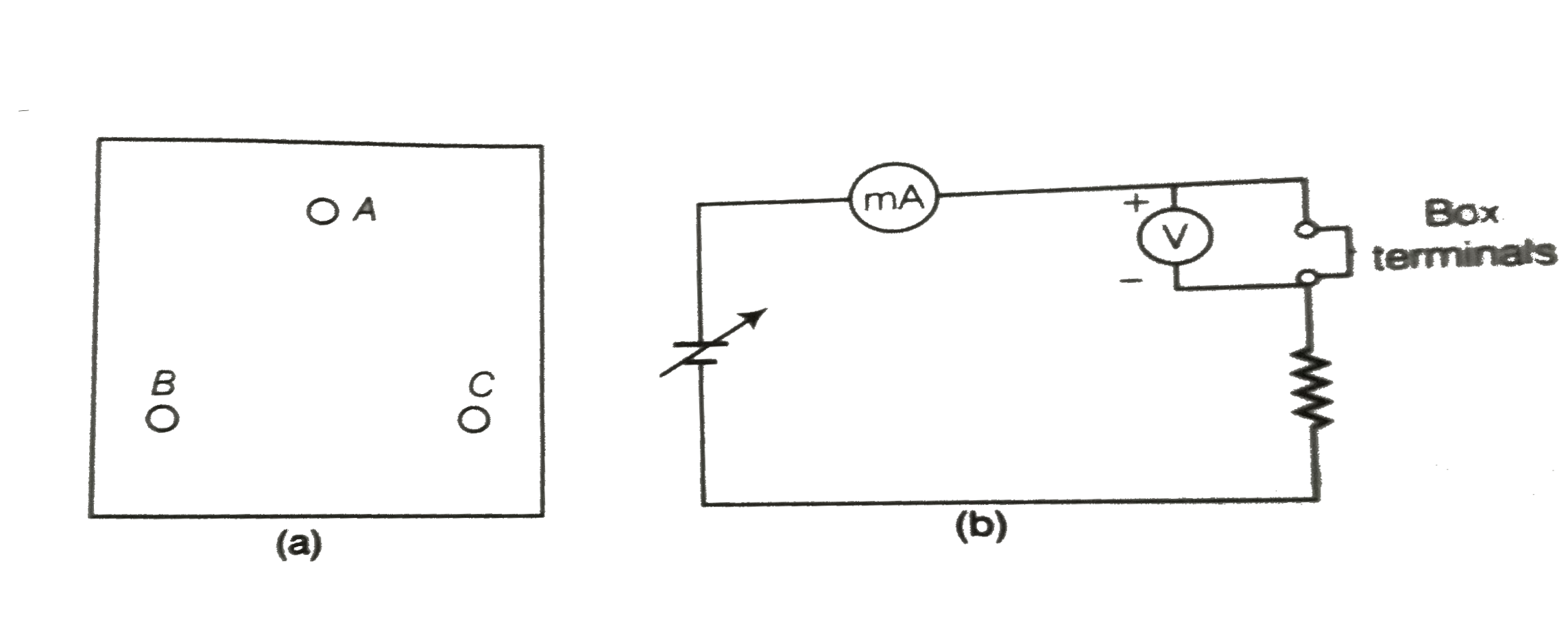
Three components namely, two germanium diodes and one resistor are connected across these three terminals in some arrangement
A student performs an experiment in which any two of these three terminals are connected in the circuit shown in figure.
The student obtains graphs of current-voltage characteristics for unknown combination of components between the two terminals connected in the circuit. The graphs are
(i) When A is positive and B is negative
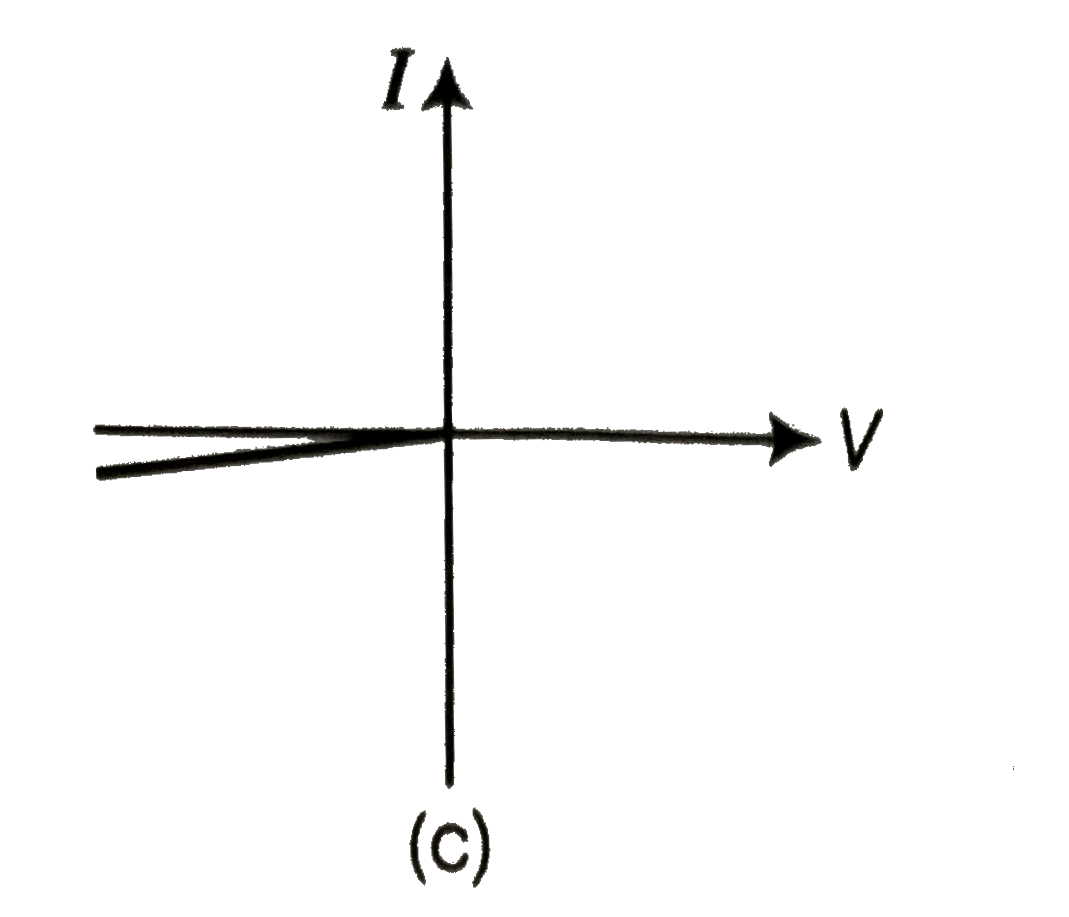
(ii) When A is negative and B is positive
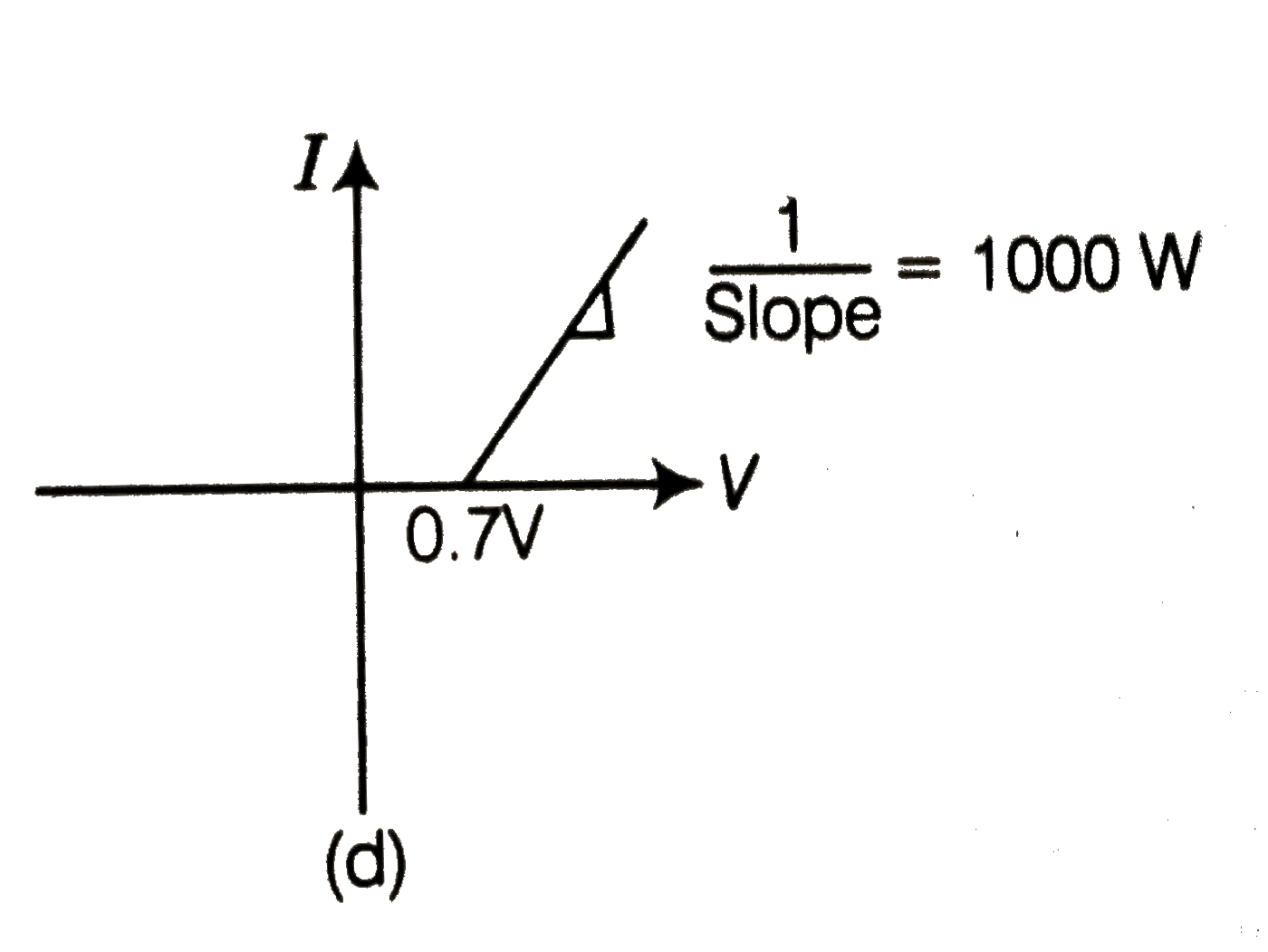
(iii) When B is negative and C is positve
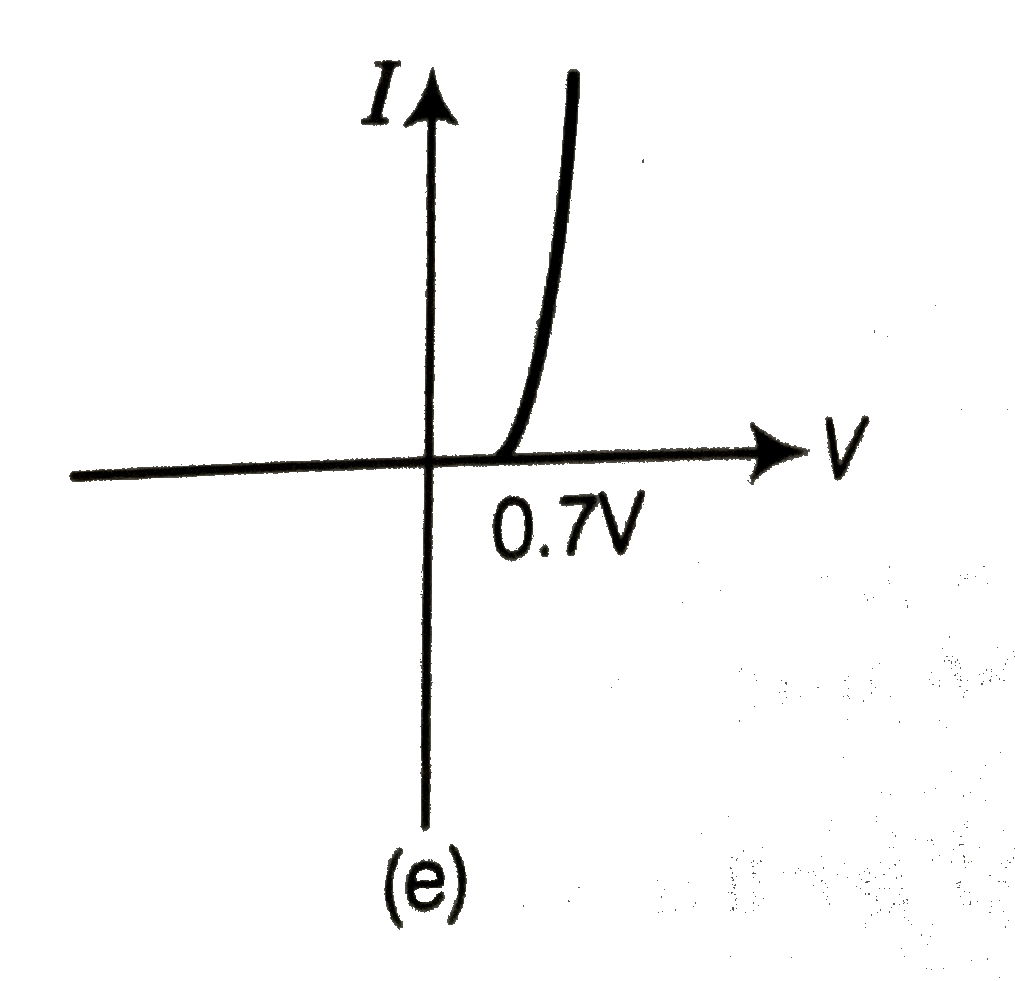
(iv) When B is positive and C is neagtive
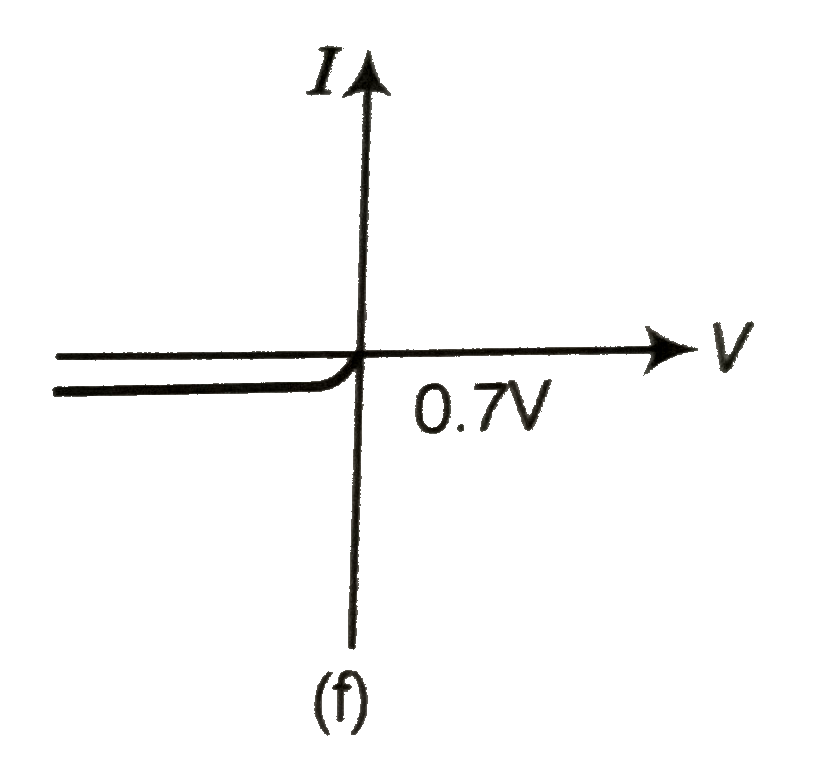
(v) When A is positive and C is negative
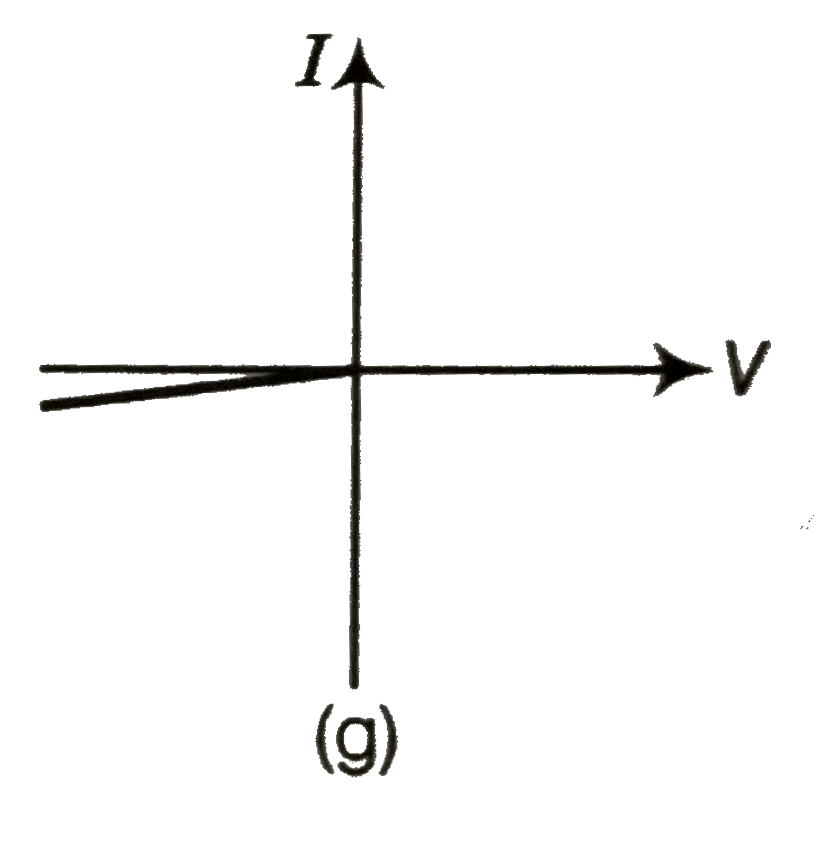
(vi) When A is negative and C is positive
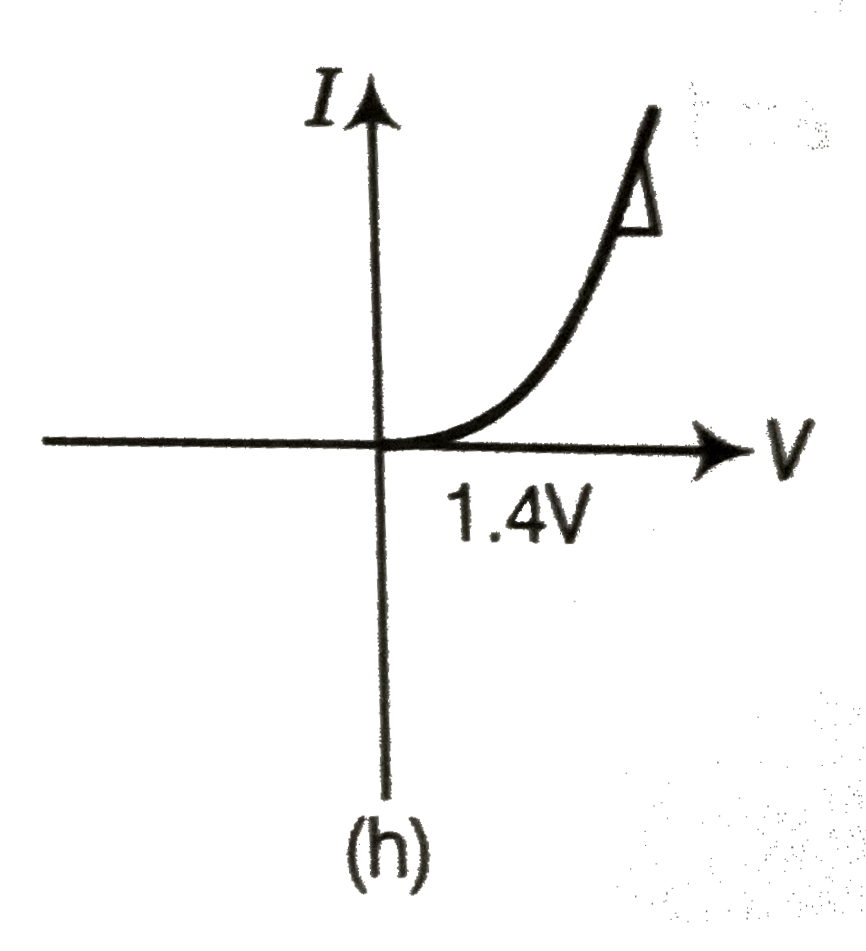
From these graphs of current − voltage characteristic shown in fig. (c) to (h) determine the arrangement of components between A, B and C.
View SolutionFigure is the plot of the stopping potential versus the frequency of the light used in an experiment on photoelectric effect. Find (a) the ratio h/e and (b) the work function.
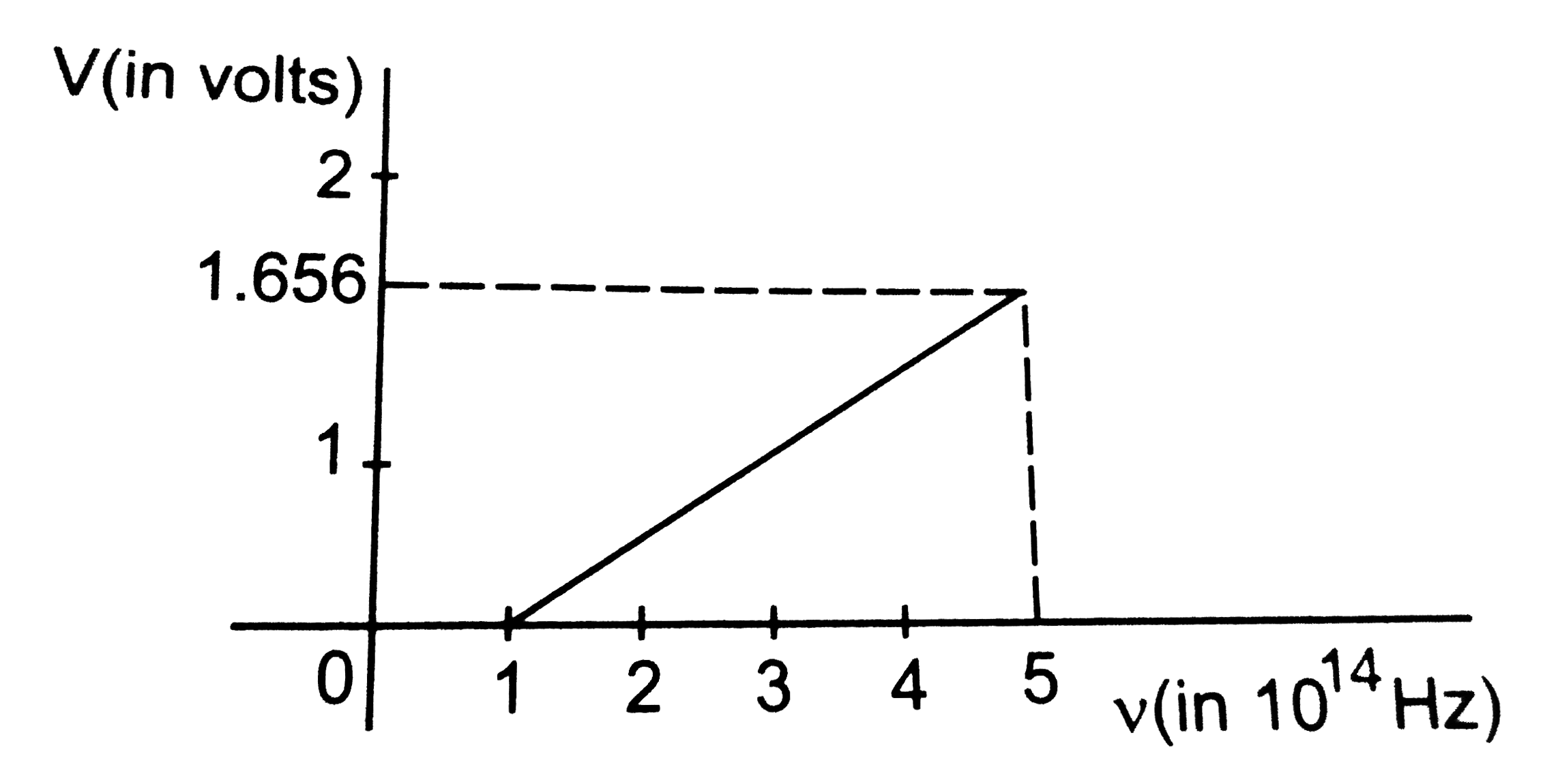
View Solution

